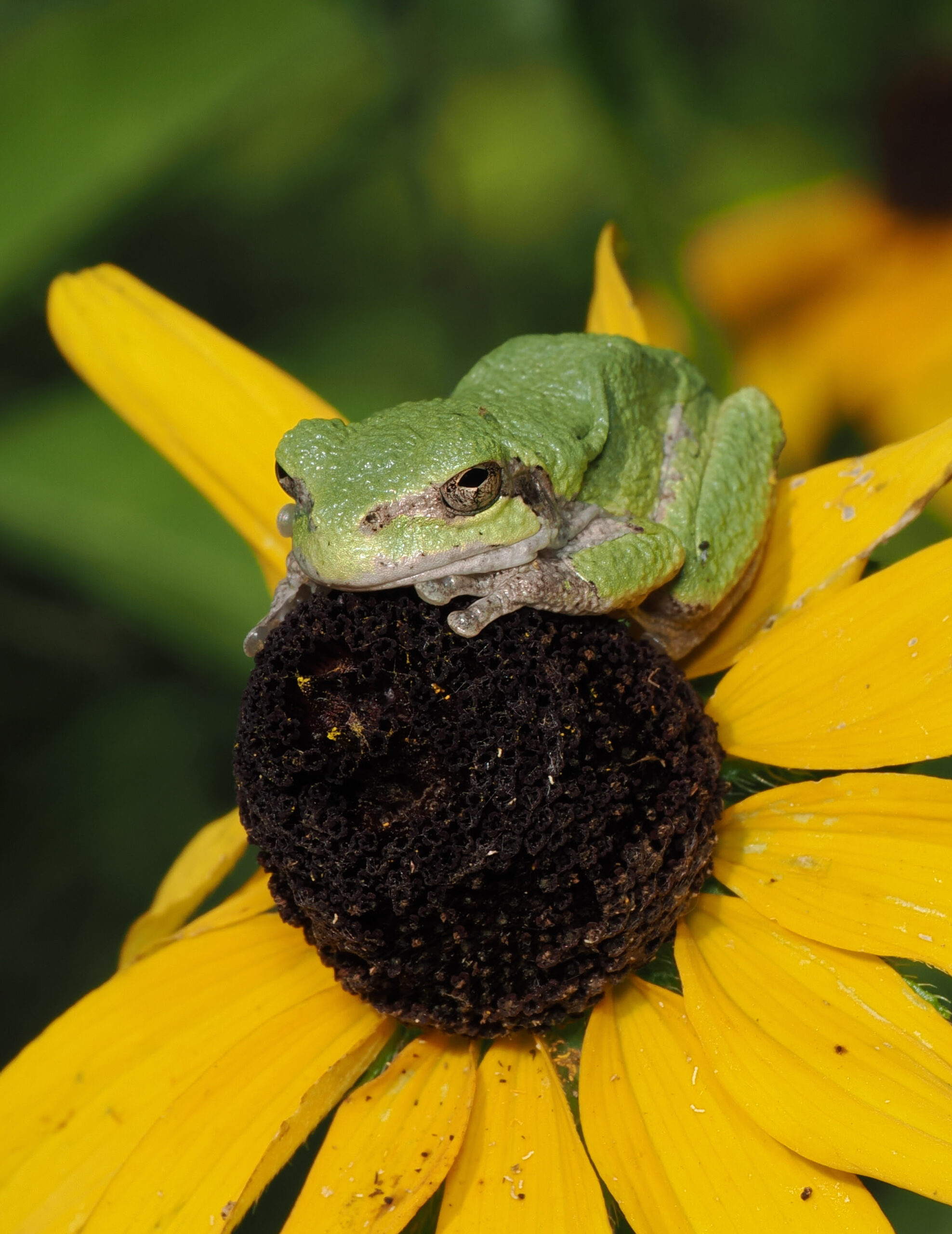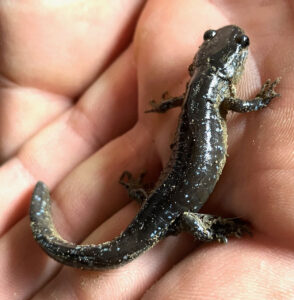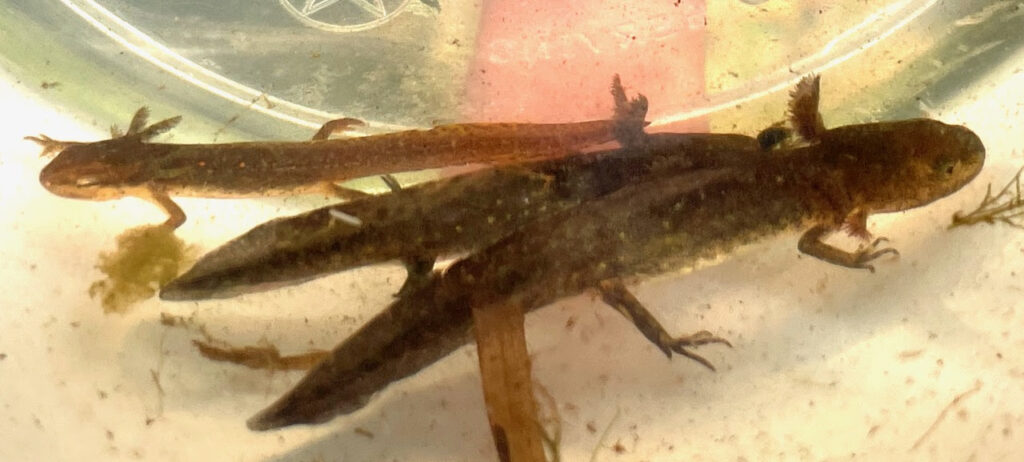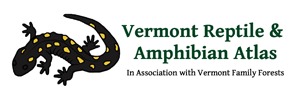
Herp Update: Recent Herp Activity – August 27, 2024
Recent Herp Activity
Isolated Reports
This week Ethan Bodin sent us the first ever report and photo of a Blue-spotted Salamander (or related hybrid) from Chittenden. Blue-spotteds are fairly common in the Lake Champlain Basin 1000 ft. lower and two miles west of this location but not up there in the hills. Ethan sent a good photo (see below), so there is no question about the ID of the salamander, but isolated reports like his that are away from a species usual habitat always raise the question of whether or not the herptile could have arrived at this location along with a potted plant; a load of hay, firewood, mulch, or something else moved by humans. Every year we get reports of lizards that upon investigation, we find have hitched a ride with an RV or boat that recently arrived from Florida or other locations in the south. Almost all of these southern herptiles will die during their first winter in Vermont, unless they end up in a greenhouse, heated warehouse, or other heated indoor location. Our Blue-spotted should be fine and hopefully time and additional reports will help us figure out if it is part of a currently unknown population or a hitchhiker.

Evening Songs
Other than a few calling Green Frogs and American Bullfrogs, amphibians are not making much noise during the evenings at this time of year. That said, there are a variety of insects calling now and some of them occasionally fool the listener into believing they are hearing amphibians. One that comes to mind is the Black-horned Tree Cricket. Rarely seen but often heard this cricket does not look like what most of us think of as crickets, and it sounds quite similar to an American Toad. Check it out and listen to its song online at Songs of Insects.
Direct Development
All of Vermont’s amphibians go through a larval stage in water except the Eastern Red-backed Salamander. Red-back eggs are laid on land and embryos go through the larval stage while still inside the egg. As a result, they are tiny when they hatch. Erin Talmage took the great photo below of a recently hatched Red-back last week at one of our monitoring sites in Lincoln. I would have missed it entirely.

Larval Salamanders
Kate Kelly took this photo of some larval Spotted Salamanders and a larval Eastern Newt we found in a beaver pond last week in Buel’s Gore. We had a group of Natural Resource Conservation Service employees with us for some field training. The smaller, lighter larva in the back is the Eastern Newt. The line through its eye is a good field mark. You can also see some of the red spots starting to form on its side. The two Spotted Salamanders in the foreground are larger, darker, wide headed, and have a higher and longer tail fin. You can also see some of their yellow spots starting to form. These larvae usually transform into their terrestrial adult phase before this date, but sometimes they do overwinter as larvae, particularly when colder water slows their development.

Gray Treefrogs
Almost all the frogs that hatch and metamorphose in one year have transformed and become terrestrial by now. Among the newly-terrestrial frogs are the Gray Treefrogs. When they transform, Gray Treefrogs are a solid emerald green with no pattern. As they mature, they develop their lichenate pattern and their ability to change color. Mike Kiernan sent us this great photo of a young Gray Treefrog.

Helen Hanley sent us this photo of an unusually dark Eastern Milksnake. Young milksnakes have bright red blotches on a white background. Their pattern darkens with age, but we have never seen one this dark.

Stephi Drago sent us this great photo of another Eastern Milksnake. Eastern Ratsnakes are famous for their ability to climb trees by only hanging on to the rough bark, but this is the first photo we have ever seen of an Eastern Milksnake using this method to climb up a tree.


